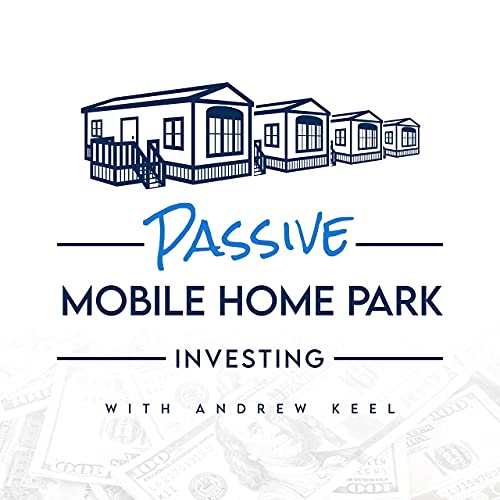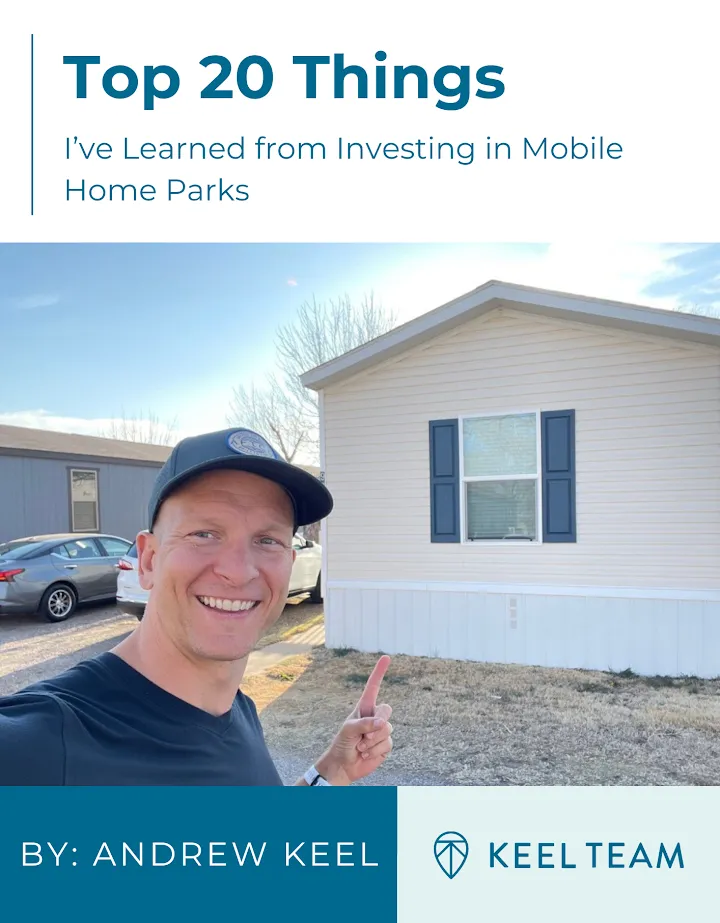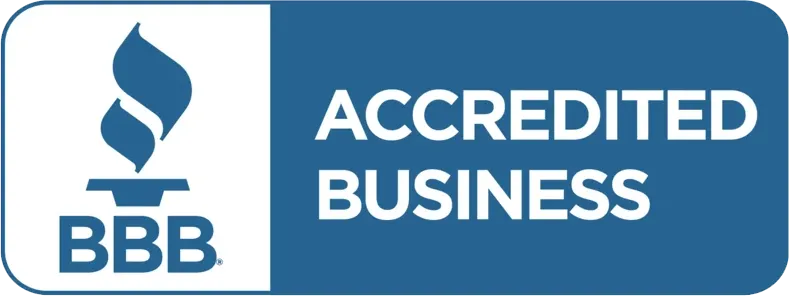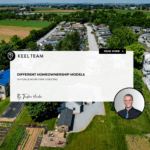How to Spot When a Mobile Home Park Deal Isn’t Aligned With Your Goals
-
 Tristan Hunter - Investor Relations
Tristan Hunter - Investor Relations
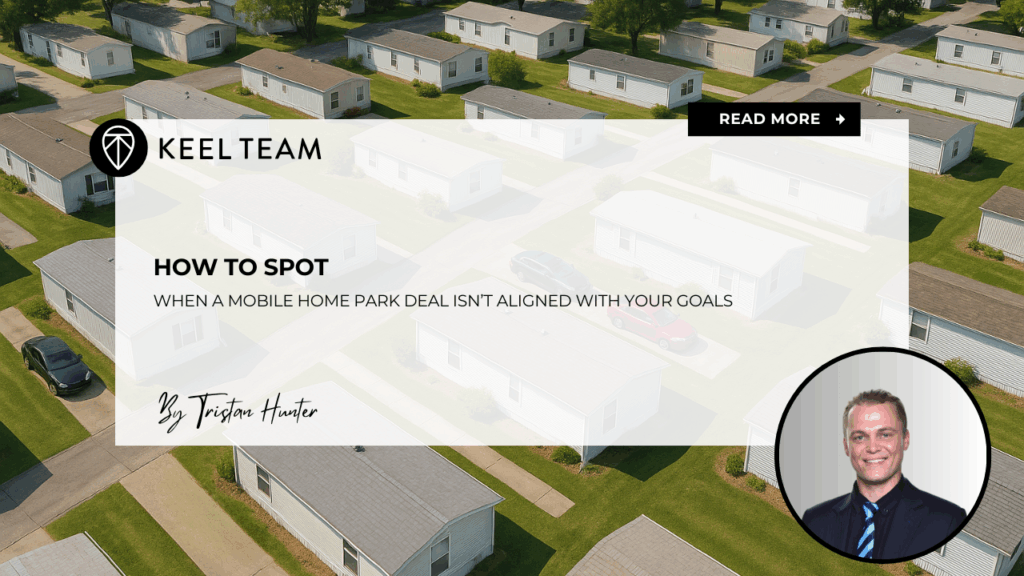
Investing in a mobile home park syndication can seem attractive, especially for those seeking passive income opportunities tied to affordable housing. However, not every mobile home park deal aligns with an investor’s financial goals or risk tolerance. Being able to identify potential red flags before committing capital may help avoid unexpected challenges.
This article explores the most common warning signs that a mobile home park deal might not be the right fit for you. By understanding these issues, you may be able to ask better questions, compare opportunities, and invest with more confidence.
Why Investor Alignment Matters
Investor alignment means that the structure of the deal, the projected returns, and the business plan all fit your personal investment strategy. A deal may be sound in its fundamentals but still unsuitable for you if, for example, it prioritizes long-term equity growth while you need near-term cash flow. Recognizing the difference between a strong mobile home park investment in general and a deal that matches your specific goals can save you time, capital, and stress.
Financial Red Flags in Mobile Home Park Deals
Overly Aggressive Return Projections
If a sponsor presents a mobile home park offering with unusually high internal rate of return (IRR) or equity multiple projections, it could be worth a second look. Some deals may require near-perfect execution to achieve those outcomes. Investors should consider whether assumptions on rent growth, infill, or refinancing are realistic compared with broader market trends.
Confusing “Return of Capital” vs. “Preferred Return”
Many passive investors are unfamiliar with the distinction between a preferred return and the return of capital. A preferred return is often described as the minimum annual return investors receive before the sponsor participates in profits. However, in some structures, this preferred return is not cumulative or may only be payable once capital is returned. Understanding exactly how your money will flow back to you is key.
High Reliance on Rent-to-Own Balances
Some mobile home park investments include large portfolios of rent-to-own notes. While these can add value, they may also complicate cash flow consistency. If projected returns rely heavily on collecting balances from residents instead of operational income, investors should consider the sustainability of that plan.
Property-Level Red Flags
Private Utilities Without Clear Plans
Mobile home parks on private utilities, such as well water or septic systems, may face higher long-term risks. Repairs and compliance requirements can be costly. If a sponsor does not present a clear maintenance and reserve plan, that could be an early warning sign.
Shrinking Market or Limited Demand
Demographic trends often determine long-term success. A mobile home park in an area with a shrinking population or declining job market may have difficulty maintaining occupancy. Even if the property cash flows today, you may want to consider the likelihood of sustained demand in that location.
Heavy Deferred Maintenance
Roads, water lines, sewer systems, and electrical infrastructure can represent major capital expenditures in mobile home parks. If a deal requires significant upfront repairs but the sponsor underestimates the cost, that may erode projected returns. Transparent CapEx budgets and timelines can help signal a more thoughtful business plan.
Sponsor-Related Red Flags
Limited Track Record
A sponsor without prior experience in mobile home park operations may face a steep learning curve. While everyone starts somewhere, investors should weigh whether the management team has relevant experience in affordable housing or commercial real estate.
Lack of Transparency in Communication
If a sponsor avoids answering questions directly, delays providing documents, or does not issue regular updates, that may foreshadow future communication challenges. Investors often rely on consistent reporting to track performance, so a lack of clarity at the outset can be concerning.
Misalignment of Interests
Sponsors often earn fees such as acquisition fees, asset management fees, or refinance fees. While fees are standard, a deal where fees appear outsized compared with investor returns could signal misalignment. Ideally, the sponsor earns most of their compensation only after investors see results.
Download our FREE eBook on the Top 20 things to know BEFORE investing in mobile home parks!
Legal and Structural Red Flags
No Clear Exit Strategy
Mobile home park syndications typically last 5 to 10 years, but not every sponsor explains their exit plan. A lack of clarity around whether they intend to sell, refinance, or hold long-term may make it difficult for investors to understand when they could receive distributions of capital.
Complicated or Vague PPM Language
The Private Placement Memorandum (PPM) outlines risks, structures, and investor obligations. If this document is unclear, vague, or incomplete, it could be a red flag. Investors should always know exactly what they are signing, even if the legal language feels dense.
Pre-Existing Relationship Concerns in 506(b) Syndications
Under SEC 506(b) rules, syndicators must have a pre-existing, substantive relationship with their investors. If a sponsor rushes through this process or appears to ignore it, that could represent a compliance issue.
Operational Red Flags in Mobile Home Parks
Weak Rule Enforcement
A mobile home park’s community reputation often comes down to rule enforcement. If residents are allowed to store clutter, abandon vehicles, or ignore upkeep, it may decrease the property’s long-term value. A sponsor who does not prioritize consistent enforcement could struggle to create a desirable community.
Overestimating Infill Potential
Infill can add tremendous value, but it requires capital, time, and resident demand. If a sponsor projects aggressive home infill without accounting for logistics or financing, investors may want to review whether those numbers are achievable.
Insufficient Reserves for CapEx
Mobile home parks often require capital for roads, utility lines, or setting new homes. If a deal does not set aside sufficient reserves, the sponsor may need to raise additional money later or reduce distributions.
Investor Self-Awareness: Are Your Goals Aligned?
Not every red flag lies within the deal itself—sometimes the misalignment is between the investor’s goals and the investment’s structure. For example:
- Income vs. Growth: Do you want steady quarterly distributions, or are you comfortable waiting for a refinance or sale event?
- Risk Tolerance: Are you seeking a stabilized mobile home park with predictable income, or are you comfortable with value-add deals that require heavy CapEx?
- Liquidity Needs: Can you afford to have capital tied up for 7–10 years?
Being clear on your own priorities helps you spot when an otherwise solid mobile home park deal might not be the right fit for your portfolio.
How to Protect Yourself as an Investor
Ask the Right Questions
Before investing, ask sponsors about exit strategies, assumptions behind projections, reserve planning, and communication processes. The more transparent the answers, the more confidence you may gain.
Review Documents Carefully
Reading the PPM, subscription agreement, and operating agreement carefully may help you spot potential concerns. Even if the legal terms feel overwhelming, focus on clarity around fees, distributions, and investor rights.
Compare Deals Side by Side
Evaluating multiple mobile home park deals at once can highlight differences in assumptions, fees, and structures. Seeing how one deal stacks up against another may help you recognize red flags more quickly.
Conclusion: Red Flags Are About Fit, Not Fear
Spotting investor red flags in mobile home park deals does not always mean the deal is “bad.” Instead, it often means the opportunity may not match your personal goals, risk profile, or timeline. By learning to identify issues such as aggressive projections, unclear exit strategies, or operational challenges, you can invest with more clarity.
Mobile home park investing may continue to attract attention because of its ties to affordable housing and potential for steady returns. However, aligning the right deal with the right investor remains the key. Staying vigilant, asking the right questions, and knowing your own priorities may make all the difference.
Are you looking for MORE information? Book a 1-on-1 consultation with Andrew Keel to discuss:
- A mobile home park deal review
- Due diligence questions
- How to raise capital from investors
- Mistakes to avoid, and more!
Disclaimer:
The information provided is for informational purposes only and is not investment advice or a guarantee of any kind. We do not guarantee profitability. Make investment decisions based on your research and consult registered financial and legal professionals. We are not registered financial or legal professionals and do not provide personalized investment recommendations.

Tristan Hunter - Investor Relations
View The Previous or Next Post
Subscribe Below 👇
